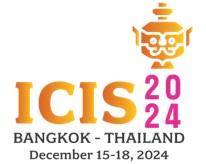Loading...
Paper Number
3151
Paper Type
Short
Abstract
Universities are increasingly offering courses on the development of new and innovative business models. Despite the relevance of digital teaching, they so far rarely use digital collaboration and ideation tools. Pedagogical conversation agents (PCAs) can moderate collaborative learning tasks and support creative processes. Integrating PCAs into virtual worlds is an innovative approach to combine both technologies' advantages regarding learning and collaboration support. This mixed methods study examines the perception of an AI-moderated group brainstorming in a 3D virtual world compared to AI-moderated brainstorming in a 2D chat using a between-subjects experiment with 70 learners. Quantitative results from the learners‘ perception reveal mostly higher ratings of the 2D chat. Qualitative results however show that learners highlighted the 3D world's potential regarding the social relatedness within the group. This paper contributes new knowledge on PCAs in entrepreneurship education, the design of virtual worlds, as well as the effects of AI-supported brainstorming.
Recommended Citation
Khosrawi-Rad, Bijan; Shahda, Farah; Rinn, Heidi; Augenstein, Dominik; and Robra-Bissantz, Susanne, "3D vs. 2D – Exploring Pedagogical Conversational Agents for AI-supported Brainstorming" (2024). ICIS 2024 Proceedings. 19.
https://aisel.aisnet.org/icis2024/humtechinter/humtechinter/19
3D vs. 2D – Exploring Pedagogical Conversational Agents for AI-supported Brainstorming
Universities are increasingly offering courses on the development of new and innovative business models. Despite the relevance of digital teaching, they so far rarely use digital collaboration and ideation tools. Pedagogical conversation agents (PCAs) can moderate collaborative learning tasks and support creative processes. Integrating PCAs into virtual worlds is an innovative approach to combine both technologies' advantages regarding learning and collaboration support. This mixed methods study examines the perception of an AI-moderated group brainstorming in a 3D virtual world compared to AI-moderated brainstorming in a 2D chat using a between-subjects experiment with 70 learners. Quantitative results from the learners‘ perception reveal mostly higher ratings of the 2D chat. Qualitative results however show that learners highlighted the 3D world's potential regarding the social relatedness within the group. This paper contributes new knowledge on PCAs in entrepreneurship education, the design of virtual worlds, as well as the effects of AI-supported brainstorming.
When commenting on articles, please be friendly, welcoming, respectful and abide by the AIS eLibrary Discussion Thread Code of Conduct posted here.




Comments
09-HTI